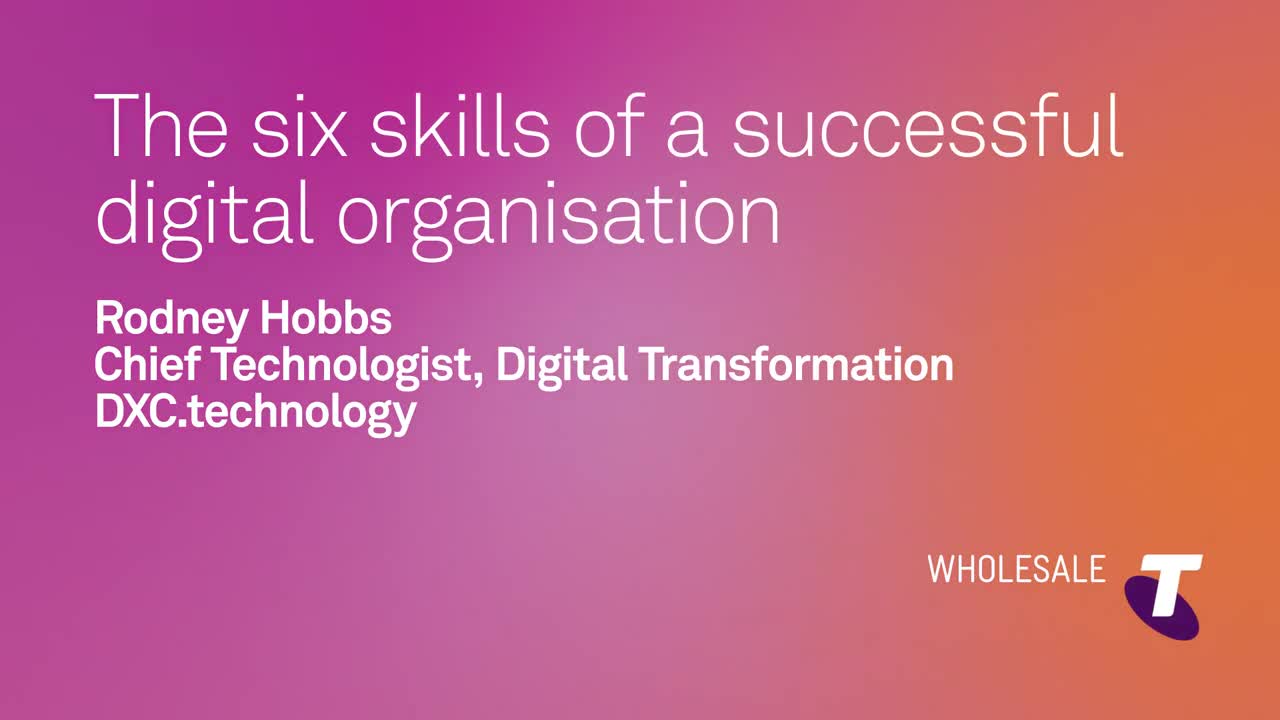Six steps to becoming a true 21st Century Organisation

DXC.Technology, one of the world’s leading IT service companies, advises businesses across the globe on digital transformation. What lessons can we learn for customers here in Australia, wishing to take advantage of digital opportunities? As Telstra Wholesale’s Platinum Content Marketing Partner for 2017/18, DXC experts shared their learnings with an audience of Wholesale customers at the recent Business.Connect event.
As the chief technology officer for digital transformation at DXC.Technology in Australia and New Zealand - one of the world’s biggest IT services companies - Rodney Hobbs knows a thing or two about how organisations are changing to take advantage of digital opportunities.
For Rodney, one of the key themes of digital transformation is the ongoing consumerisation and personalisation of technology. “Experience is the new currency of the customer. We have higher expectations of the services and products we use, so we seek offerings that are personalised to our specific needs,” Rodney says. “Success comes from understanding those needs, and adapting to cater for them.”
With that in mind, Rodney has six steps for organisations that want to become true 21st century businesses.
1. Sharpen those haptic senses
Organisations need to have good ‘haptic sense’ processes in place. “These are the systems and tools that enable firms to identify and understand trends inside and outside of their business, and then empower them to be agile in responding to those early indicators for a competitive advantage,” Rodney explains.
2. Be clear on your digital identity
According to Rodney, “businesses need a strong digital identity to keep customers, employees and partners engaged. They need to communicate how they fit into this new digital world, and what digital capabilities they can use to solve their audience’s problems and win the game for their staff”.
3. Look outside for assets and capabilities
“Businesses of all sizes are finding that they can’t deliver on customer expectations on their own but, by creating and participating in ecosystems of complementary partners, they don’t need to,” Rodney says. “Uber and Airbnb have proved companies no longer need to own physical assets to win in the digital world. Instead, organisations now drive value from their ecosystems,” he adds.
4. Be digital from end-to-end
All too often in Rodney’s experience, businesses are content with a veneer of digital respectability. They use one or two visible initiatives to convey the sense of digitisation while holding back from root-and-branch transformation. “If leaders want to avoid putting digital lipstick on an analogue pig, digital needs to stretch into every part of their business,” says Rodney.
Agility - the ability to adapt to trends, events and new technologies - is a vital trait of thriving businesses
5. Adopt adaptive execution
Agility - the ability to adapt to trends, events and new technologies - is a vital trait of thriving businesses. For Rodney, the key is not just adapting to the current disruption but building the culture and processes that enable organisations to continue changing over a long period of time.
“In practical terms, this means improving the decision-making processes. For example, look at combining and using data sets to predict possible outcomes, rather than basing strategy on past performance,” says Rodney.
Organisations can also categorise business functions into ‘fast and slow’. Rodney explains: “The former are areas where businesses have their core competitive advantage, and in which experimentation and rapid iteration are required to maintain it. The latter are non-differentiating business processes such as procurement or recruitment which can be optimised but don’t need constant evolution.” Once leaders have determined where their processes sit, they can be more effective about allocating resources and investment.
6. Live your digital values
The final, and hardest step, is to shift the leadership mindset. “Business leaders like to have control and a defined pathway to their goal. Now we see that successful leaders have a clear vision of where they are going, but are willing to be flexible in how they get there. They are comfortable using a compass instead of a map” Rodney says.
Each of these steps reinforces the main lesson from Rodney’s experience. The learning that digital transformation is as much about reimagining processes as it about updating technology. “Those organisations that succeed are those that change mindsets as well as toolsets” he concludes.